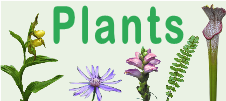







Loading profile. Please wait . . .
Buchnera americana L.
American Bluehearts




Federal Protection: No US federal protection
State Protection: No Georgia state protection
Global Rank: GNR
State Rank: S1
Element Locations Tracked in Biotics: Yes
SWAP 2015 Species of Greatest Conservation Need (SGCN): Yes
SWAP 2025 Species of Greatest Conservation Need (SGCN): No
2025 SGCN Priority Tier: None
Element Occurrences (EOs) in Georgia: 7
Habitat Summary for element in Georgia: Wet meadows; seasonally moist barrens and limestone glades
Perennial herb with hairy, usually unbranched stems 1 - 3 feet (30-90 cm) tall. Leaves are up to 2.4 inches (6 cm) long (much shorter near the top of the stem), opposite, simple, and lacking stalks, oval to lance-shaped with pointed tips, hairy, with 3 main veins and irregularly toothed margins; leaves and stems turn black quickly after picking. Flower clusters are held at the top of stems, the flowers stalkless and held in pairs. The flowers have 5 pink, white, or blue-violet lobes spreading from the top of a tube (the lobes are about 0.2 inch [0.5-0.8 cm] long); the bases of the lobes are hairy and often marked with darker nectar guides; the 5-lobed, tubular calyx is about 0.25 inch (0.6-0.8 cm) long including the triangular lobes. Fruits are blackish, smooth, oval to oblong capsules about 0.25 inch (0.6-0.8 cm) long.
Florida Bluehearts (Buchnera floridana) occurs in pine savannas and flatwoods, seepage slopes, and pitcherplant bogs in the Coastal Plain. Its leaves have only one main vein (not three) and blunt or rounded tips; the margins may or may not be toothed. The flowers are smaller, with both the corolla lobes and calyx tube less than 0.2 inch (0.2-0.5 mm) long.
The genus Buchnera is in the Broomrape family (Orobanchaceae) that includes a number of genera with rare, hemiparasitic species in Georgia, including Agalinis, Castilleja, Macranthera, Pedicularis, and Schwalbea.
Rocky or clayey soil of limestone and mafic rock glades, prairies, wet meadows, sandy roadsides, and other open habitats with circumneutral to high pH soils.
American Bluehearts is a perennial plant that reproduces by seed. Population sizes are known to fluctuate as a result of flooding or drought. It apparently forms a seed bank that remains viable for up to 3 years. It is hemi-parasitic: the plants photosynthesize but derive some of their nutrients and moisture from attaching their roots to the roots of other plants. Plants are also known to thrive without a haustorial connection to a host. It is not host-specific and has been found connected to a variety of trees, including Hackberry, Tulip Tree, Black Gum, White Oak, White Pine, Green Ash, and Cottonwood; given that it is largely a species of open habitats, it seems likely that it also parasitizes grasses. American Bluehearts has been observed to damage small trees if the number of haustorial connections is high during times of drought stress.
Surveys are best conducted when American Bluehearts is in flower, June–September.
Buchnera americana occurred from Florida west to Texas, north to Ontario and New York, but is now presumed to be extirpated from Michigan, New York, and New Jersey. It is rare in Georgia, Illinois, Indiana, Kentucky, Ohio, Pennsylvania, Tennessee, Texas, and Virginia.
American Bluehearts is threatened by loss of habitat throughout its range. It depends on open habitats to thrive and on sunny, bare mineral soils for seed germination; it is therefore threatened by the absence of fire or other natural disturbances that prevent woody encroachment. High water levels also play a role in limiting woody encroachment in some areas, such that permanent hydrological changes are also a threat. Vehicle traffic, mining, development, and invasion of its habitat by exotic pest plants all pose threats to this species. Loss of pollinators from pesticide application is also potential threat.
Buchnera americana is ranked S1 by the Georgia Department of Natural Resources, indicating that it is critically imperiled in the state. It is apparently in decline throughout its range. Seven populations have been documented in Georgia but only one has been confirmed in the last 20 years. Two populations are known from Fort Benning, another from private land under a conservartion easement in 2012.
Monitor populations for encroachment by woody species and apply prescribed fire as needed, or implement a hand-clearing or carefully timed mowing regime. Prevent access by off-road vehicles and all-terrain vehicles. Monitor populations for exotic species invasion.
Brownell, V.R. 2000. Status report on Bluehearts, Buchnera americana, in Canada. Committee on the Status of Endangered Wildlife in Canada. Ottawa, Ontario. https://tinyurl.com/y3dwo3b3
GADNR. 2019. Element occurrence records for Buchnera americana. Georgia Department of Natural Resources, Wildlife Resources Division. Social Circle, Georgia.
NatureServe. 2019. Species account for Buchnera americana. NatureServe Explorer: an online encyclopedia of life, Version 7.1. NatureServe, Arlington, Virginia. Accessed 8 June 2019. http://explorer.natureserve.org/servlet/NatureServe?searchName=Buchnera+americana
Sorrie, B.A. 2019. Buchnera. In: Flora of North America, Vol. 17, Magnoliophyta: Tetrachondraceae to Orobanchaceae. Oxford University Press, New York.
Tenaglia, D. Buchnera americana species description (based on Steyermark, 1963). Missouriplants.com: photographs and descriptions of the flowering and non-flowering plants of Missouri, USA. http://www.missouriplants.com/Blueopp/Buchnera_americana_page.html
Weakley, A.S. 2015. Flora of the southern and mid-Atlantic States. University of North Carolina Herbarium, University of North Carolina, Chapel Hill. http://www.herbarium.unc.edu/flora.htm
Wunderlin, R. P., B. F. Hansen, A. R. Franck, and F. B. Essig. 2019. Buchnera americana. Atlas of Florida Plants. Institute for Systematic Botany, University of South Florida, Tampa. http://florida.plantatlas.usf.edu/Plant.aspx?id=3498
Linda G. Chafin
Linda G. Chafin, 29 July 2019: original account


